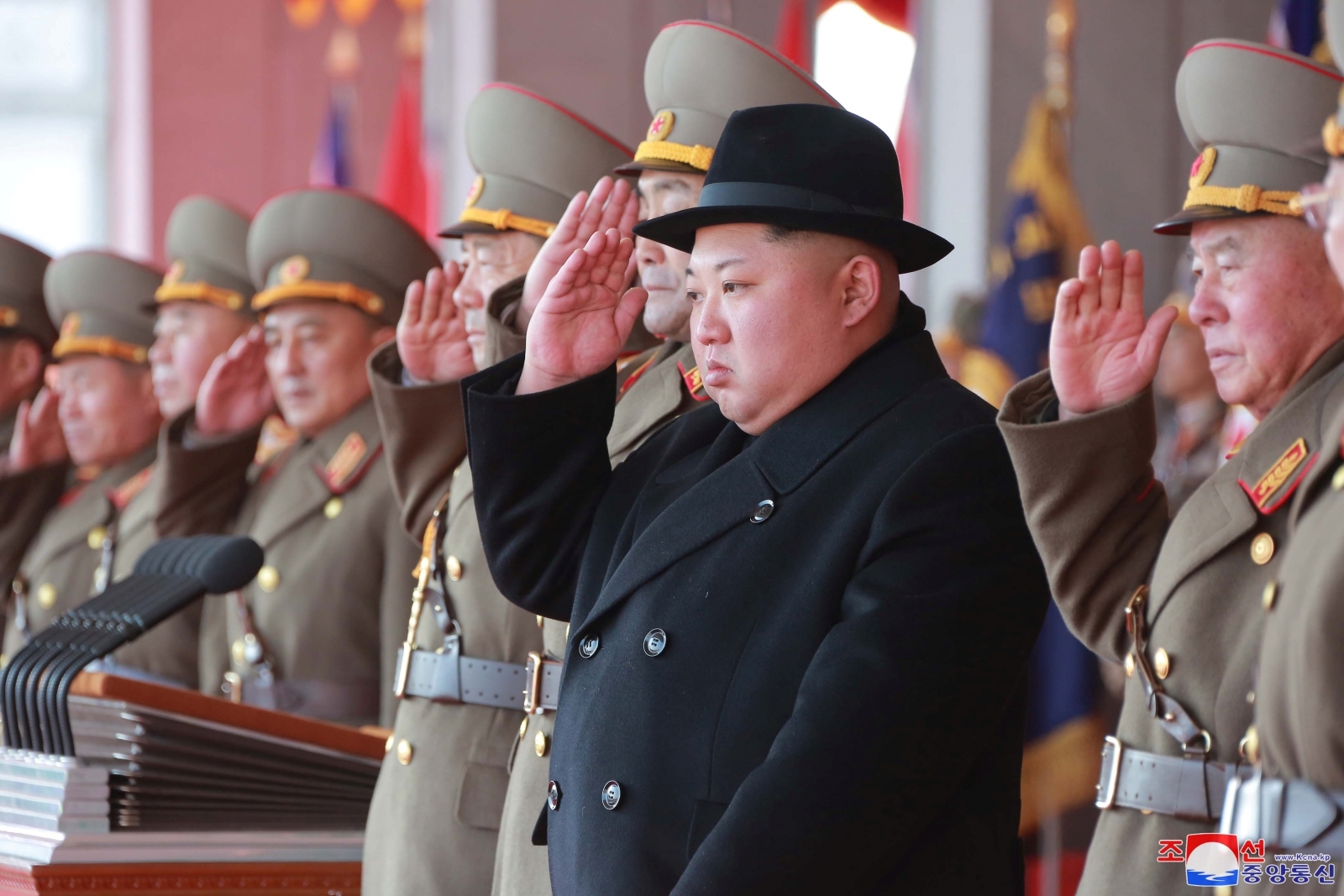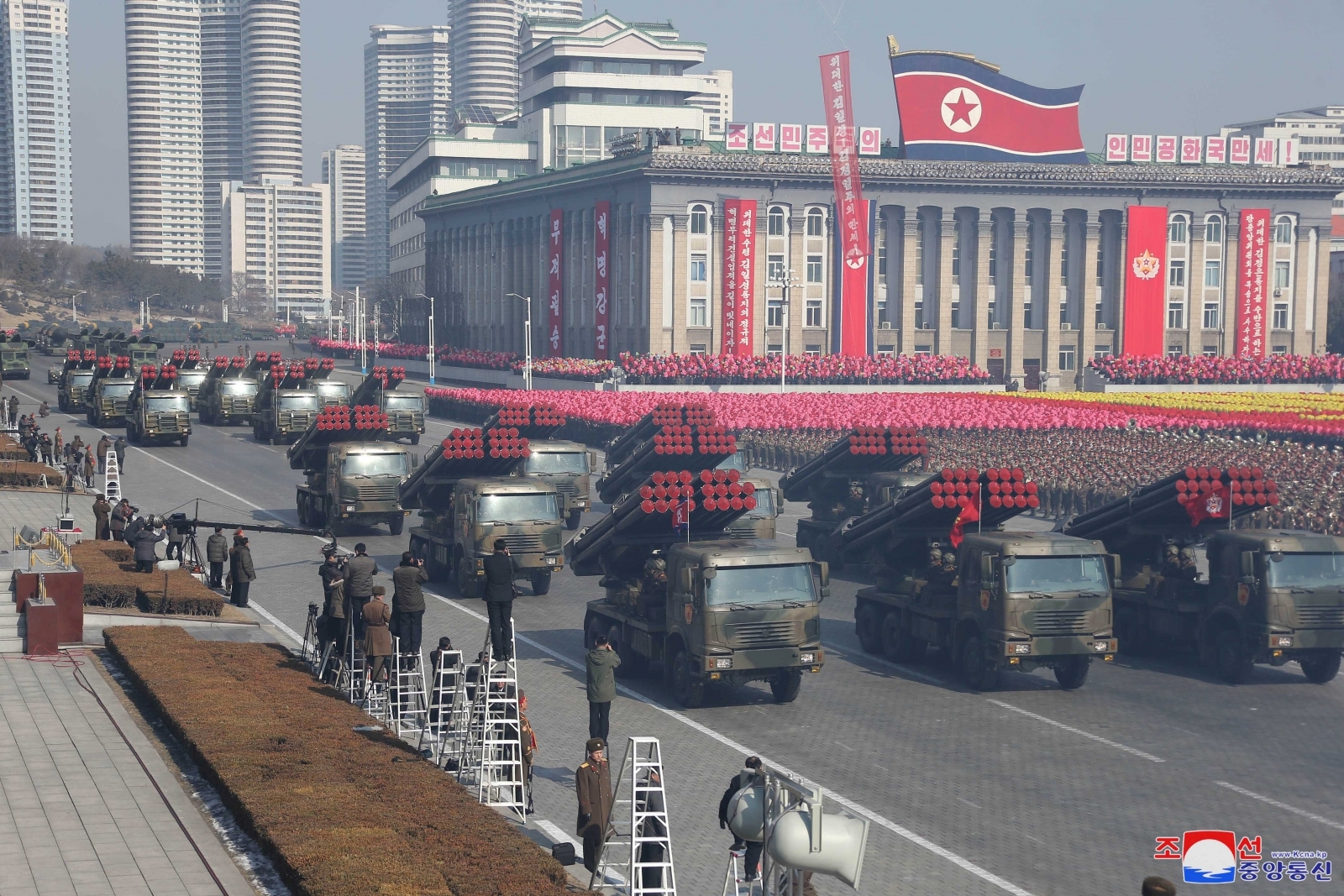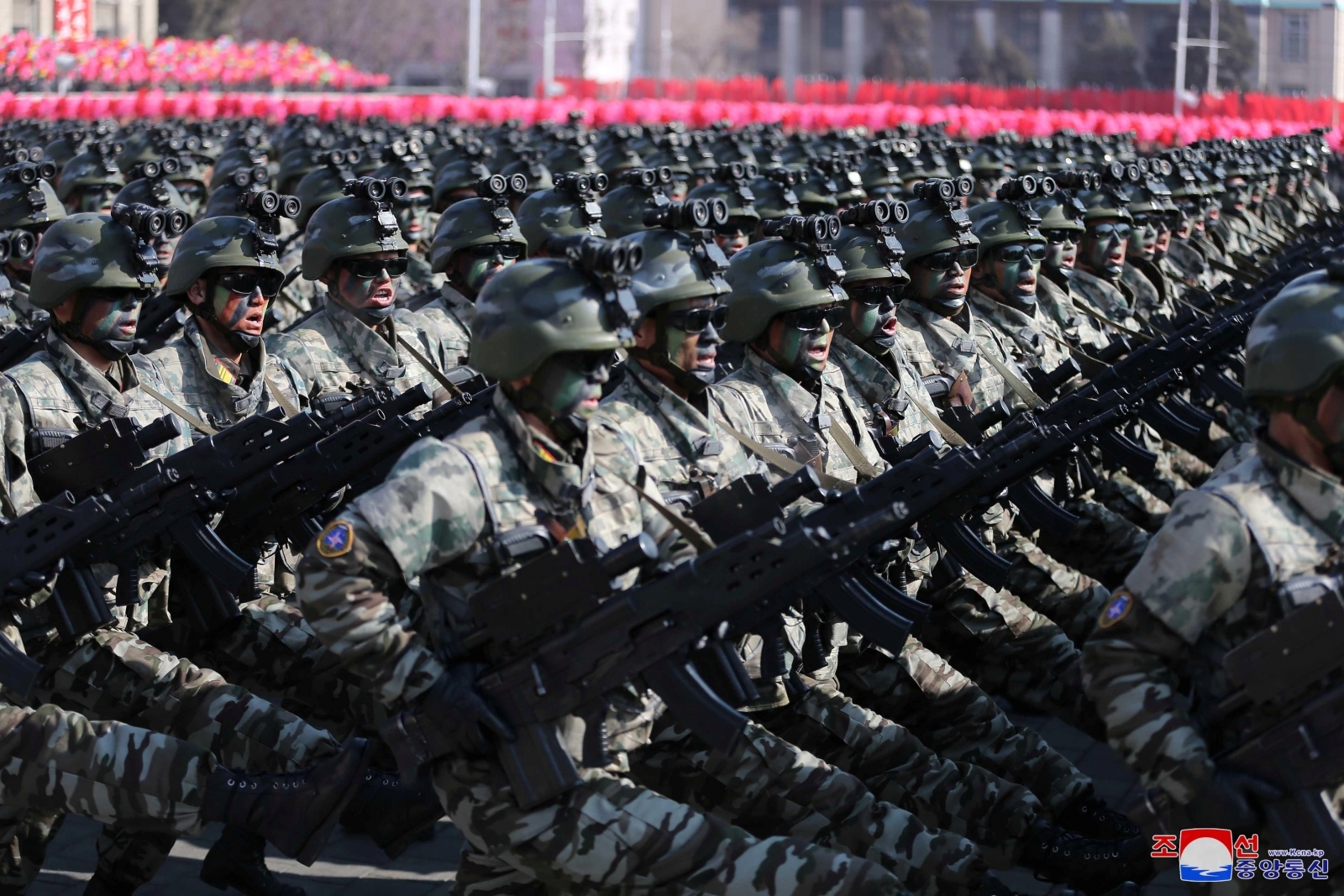Photos: New missile system unveiled at North Korea's military parade, satellite images reveal
According to experts, Pyongyang unveiled a new short-range ballistic missile during the parade.



A new short-range ballistic missile (SRBM) was unveiled at North Korea's highly anticipated military parade held to celebrate the 70<sup>th anniversary of the Korean People's Army on 8 February, satellite images reportedly reveal.
According to experts at US-based think tank 38North, compared to Pyongyang's previous parades, the parade was relatively smaller in scale. However, it still provided a peek into North Korea's growing WMD (weapons of mass destruction) programme.
The external features and size of North Korea's new SRBM indicate that it may be similar to South Korea's Hyunmoo-2 ballistic missile, according to 38 North. Experts suspect that the new missile may also be based on Russia's Iskander 9K720 ballistic missile.
Pyongyang's new missile appears to be bigger than North Korea's solid-fuel short-range missile system – the Toksa SS-21. Experts believe that the larger size of the new missile could mean that the SRBM likely has a longer range, equal to that of either the Iskander or the Hyunmoo-2 systems.
"Without further details it is impossible to determine its performance characteristics or origins. It is notable, however, that the missiles seen in the parade have data-cable covers that run alongside the exterior surface and extend well into what is believed to be the warhead section, which makes little sense," 38North expert Michael Elleman wrote in a report. "The cables are used to transmit instructions from the guidance unit (located at the top of the motor, but below of the warhead section) to the steering mechanisms at the back end of the missile."






North Korea's military parade also featured four Hwasong-15 ICBMs. Although the long-range missile has only been tested once, it is expected to be capable of delivering a nuclear warhead anywhere in the US. However, Pyongyang is yet to demonstrate that it possesses a nuclear warhead capable of surviving re-entry.
The parade also showcased six Hwasong-12 intermediate-range ballistic missiles (IRBMs). "The Hwasong-12 can reach targets as far as Guam and has been flight tested six times, the first three tests failed and the last two test launches overflew Japan before crashing into the Pacific Ocean," Elleman wrote. "It may already be deployed to military units, though more development and validation testing are needed to quantify its reliability and accuracy, details that may be less important to the Kim regime."




















